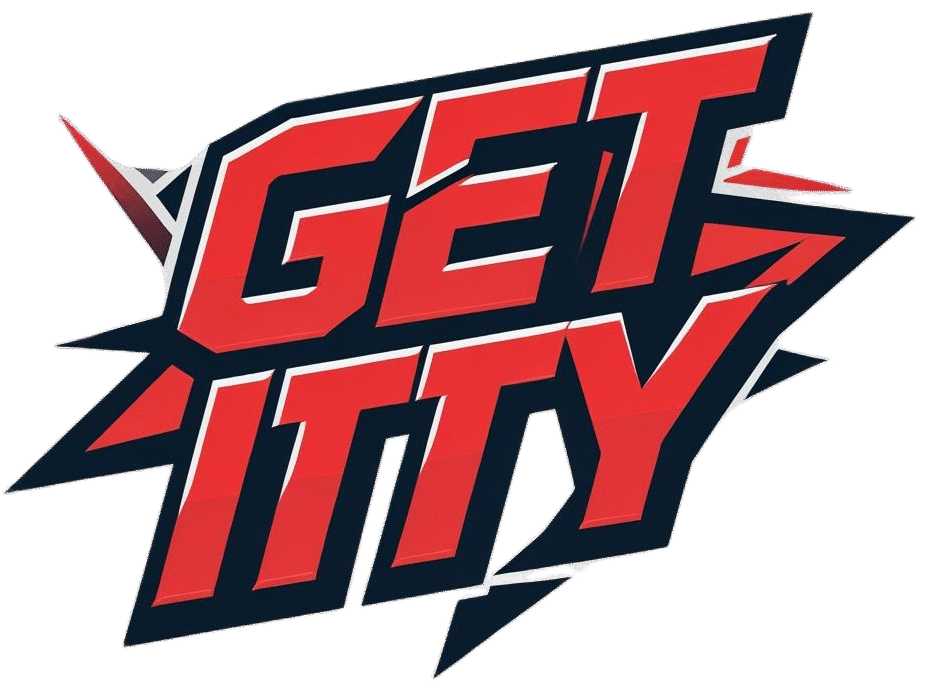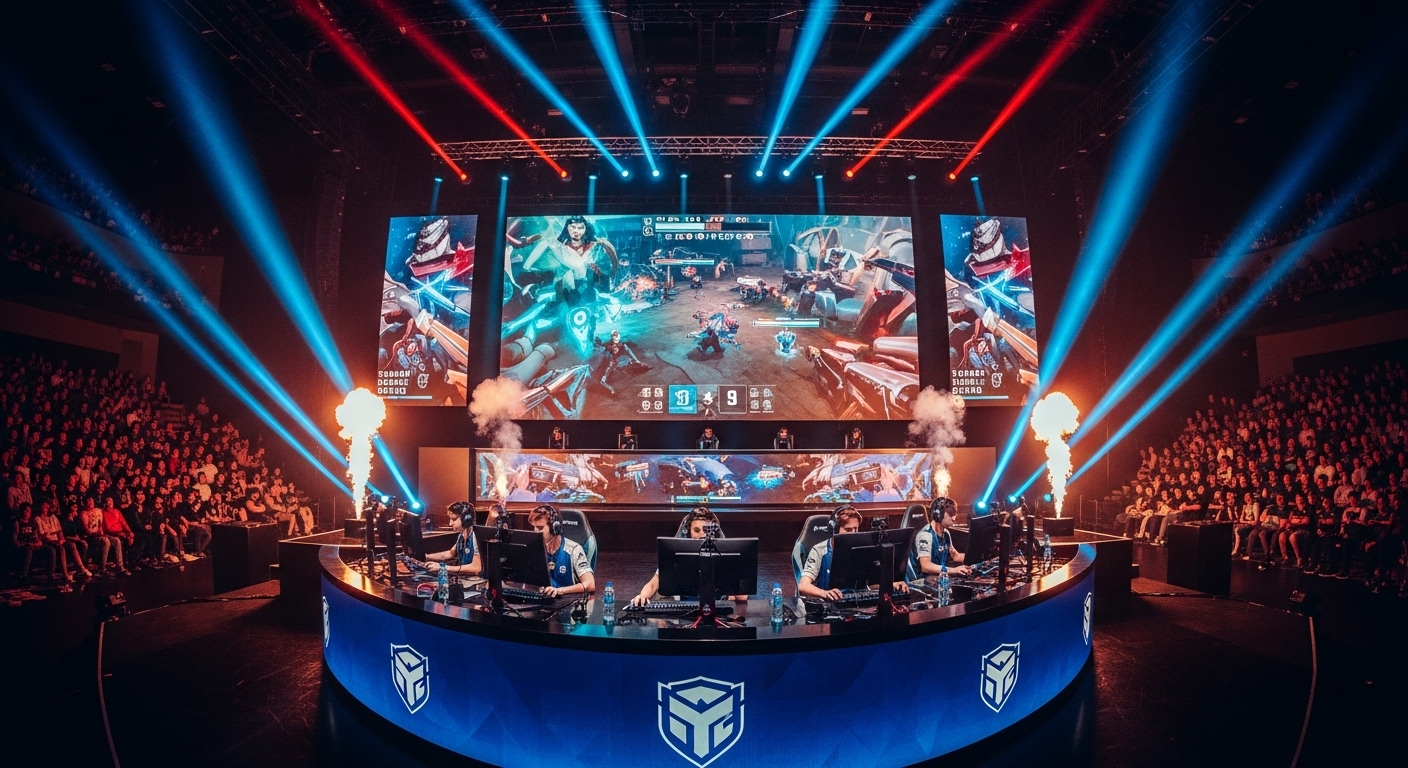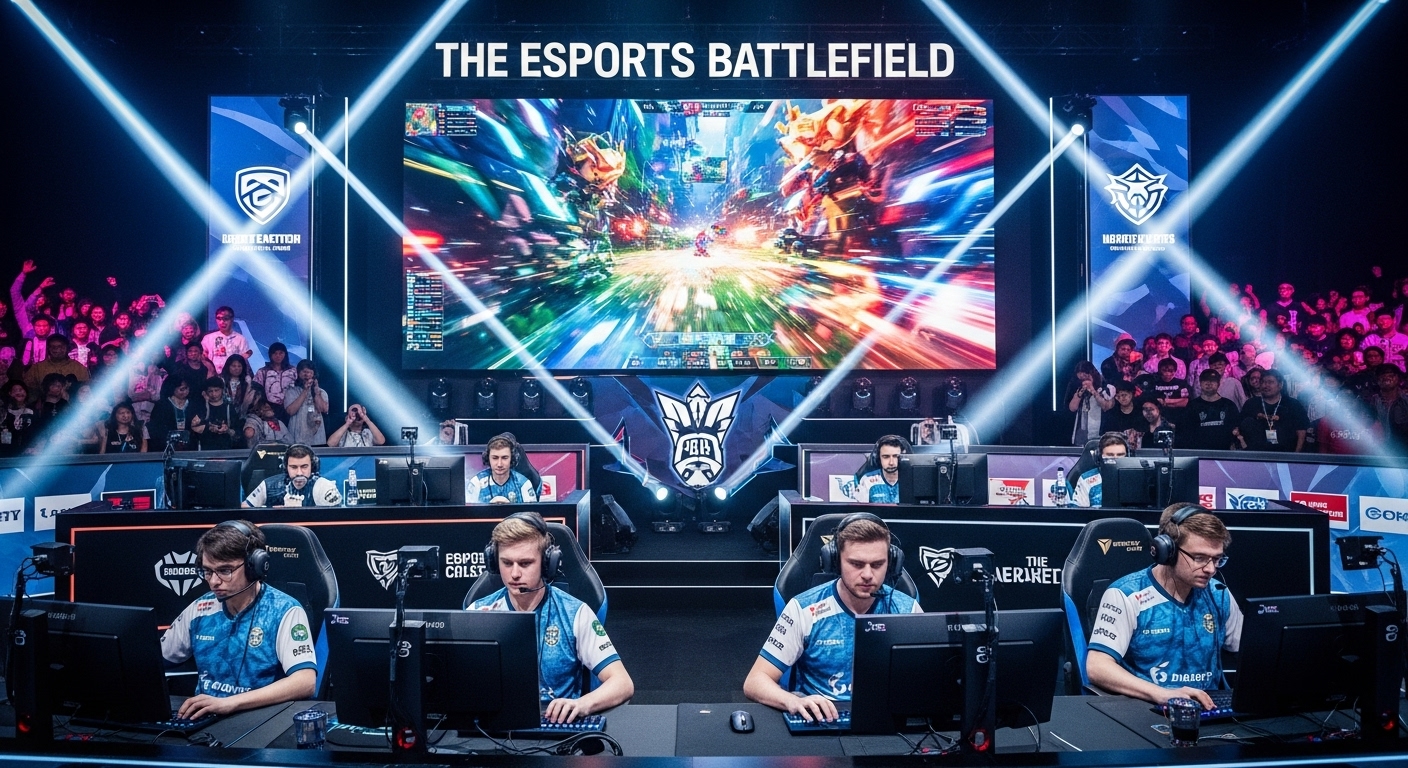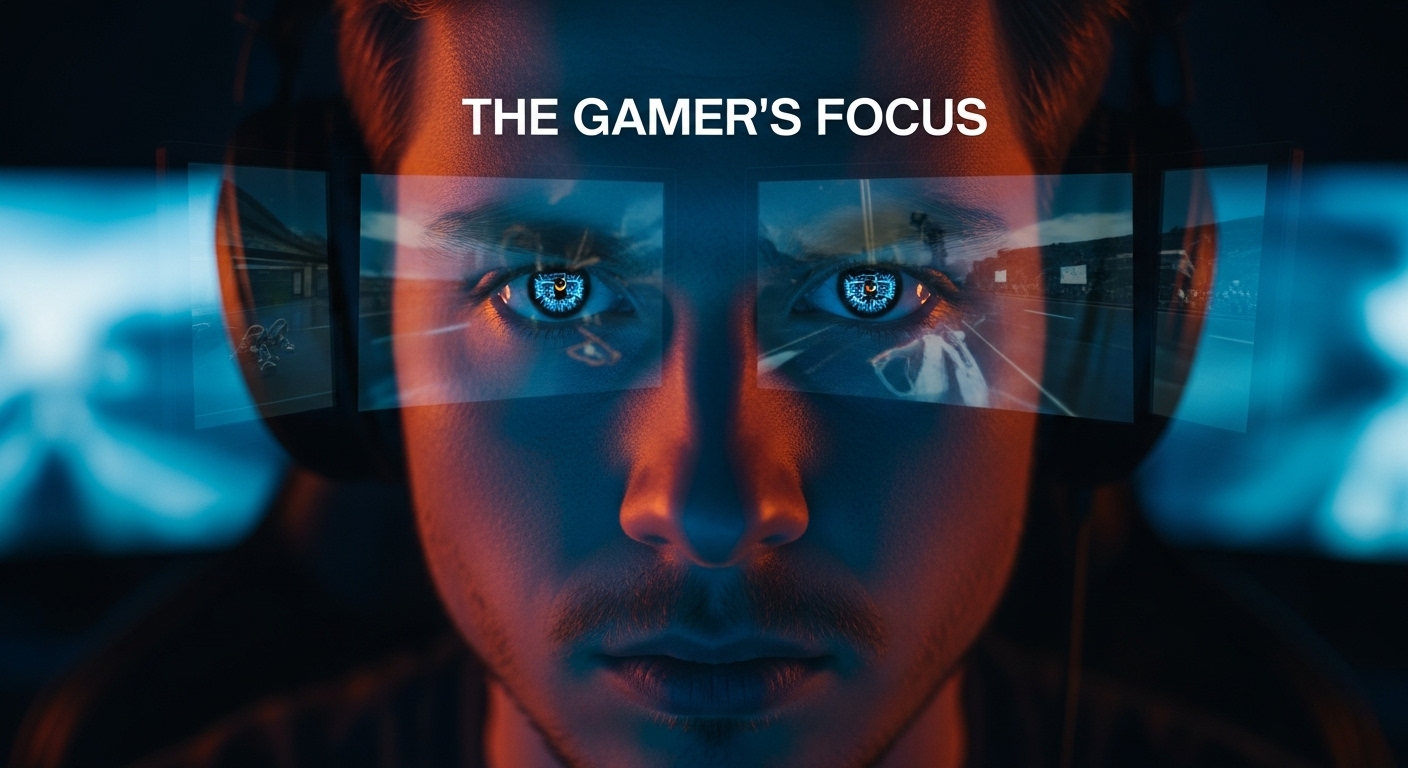Introduction
Esports, short for electronic sports, has evolved from a niche hobby into a global phenomenon that rivals traditional sports in scale, popularity, and influence. What began as casual gaming competitions among friends has become a multibillion-dollar industry with professional leagues, celebrity players, and millions of fans worldwide. The world of Esports represents a fascinating intersection of technology, entertainment, and athleticism, showing how digital innovation can reshape the cultural landscape. Over the past two decades, gaming has transitioned from a pastime into a legitimate profession and spectator sport. This transformation reflects not only advancements in technology but also a shift in how society perceives competition, skill, and digital culture.
The Early Days of Competitive Gaming
The roots of Esports can be traced back to the late 1970s and early 1980s, when video game arcades were at their peak. Games like Space Invaders, Donkey Kong, and Pac-Man attracted players eager to set high scores and earn bragging rights. In 1980, the Space Invaders Championship, hosted by Atari, is often cited as one of the first organized gaming tournaments, drawing over ten thousand participants. At the time, no one could have predicted that this simple contest would lay the groundwork for a new form of global entertainment.
The 1990s brought rapid advancements in computer technology, the rise of the internet, and the explosion of multiplayer games. Titles like Doom, Quake, and StarCraft became synonymous with competitive gaming culture. Players could now connect online, challenge opponents across the world, and build early communities around their favorite titles. South Korea emerged as a major force during this period, embracing gaming as both a cultural pastime and a professional pursuit. PC Bangs—gaming cafes—became hotspots for aspiring players to practice, strategize, and compete.
The Birth of Professional Esports
While gaming competitions existed before the 2000s, the concept of professional Esports truly took shape in the early twenty-first century. Broadband internet became more accessible, and online multiplayer games began incorporating ranking systems, tournaments, and live events. Titles like Counter-Strike, StarCraft: Brood War, and Warcraft III laid the foundation for organized competition.
In South Korea, the government and media recognized the potential of Esports early on. Television channels broadcasted matches, and professional teams began to form with sponsorships from major corporations. Players became national celebrities, and gaming leagues such as the Korean e-Sports Association (KeSPA) helped standardize rules and structure the competitive environment. This professionalization gave rise to the first generation of true Esports athletes, who trained rigorously and competed for significant prize pools.
The Expansion into the West
As Esports continued to flourish in Asia, Western countries began to catch up. The release of games like Halo, Call of Duty, and Counter-Strike: Source fueled interest in North America and Europe. Organizations such as Major League Gaming (MLG) in the United States helped establish a formal infrastructure for tournaments and professional players. LAN events became the gathering grounds for fans and competitors alike, transforming gaming conventions into massive celebrations of skill and strategy.
During this period, streaming technology was still in its infancy, and most competitions were either live events or recorded broadcasts. Yet, even then, the excitement surrounding Esports was undeniable. Fans would pack stadiums and halls to watch their favorite players compete, often with the same enthusiasm seen in traditional sports arenas.
The Streaming Revolution
The true explosion of Esports popularity coincided with the rise of streaming platforms. Services like Twitch and YouTube Gaming allowed millions of fans to watch live matches, follow their favorite players, and engage with content in real time. The accessibility of live streaming democratized Esports viewership, allowing anyone with an internet connection to become part of the global gaming community.
This shift transformed Esports from a niche entertainment form into a mainstream cultural force. Streamers and content creators began building personal brands, and professional players gained massive fanbases. Viewership for major tournaments such as The International for Dota 2, the League of Legends World Championship, and the Overwatch League rivaled or even surpassed that of traditional sporting events. The 2018 League of Legends World Championship, for instance, attracted tens of millions of concurrent viewers, signaling a new era in entertainment.
The Business of Esports
Behind the glamour and excitement of Esports lies an intricate business ecosystem. What began as small prize pools funded by gaming enthusiasts has evolved into a complex industry supported by sponsorships, advertising, merchandise, and media rights. Major corporations, including technology brands, energy drink companies, and apparel manufacturers, have invested heavily in Esports.
Professional teams now operate like traditional sports franchises, complete with training facilities, coaches, nutritionists, and analysts. Players sign contracts, negotiate salaries, and are often represented by agents. Prize money for tournaments can reach staggering figures—The International 2021 for Dota 2 boasted a prize pool exceeding 40 million dollars, making it one of the richest competitions in history.
The Esports industry’s valuation continues to grow, with analysts projecting it to reach billions in annual revenue. Sponsorships and advertising deals form a significant portion of this revenue, followed by media rights, merchandise sales, and live event tickets. The global nature of Esports means that fans from every continent can engage simultaneously, making it one of the most interconnected forms of entertainment.
The Life of a Professional Esports Athlete
Contrary to stereotypes, professional gamers are far from casual hobbyists. They undergo rigorous training schedules, often practicing ten or more hours a day to maintain their edge. Team coordination, strategy, communication, and reflexes all play crucial roles in determining success. Like traditional athletes, Esports players must maintain physical and mental well-being to perform consistently.
Many teams provide structured training regimens that include fitness programs, diet plans, and mental coaching. The pressure to perform at the highest level can be immense, given that careers in Esports are often short-lived due to rapid changes in game meta and the toll of constant practice. Reaction time and focus decline with age, meaning most players peak in their late teens or early twenties. However, even after retiring from competition, many players transition into coaching, commentary, or content creation, continuing to contribute to the industry.
The Role of Technology in Esports
Technology is the backbone of Esports. From high-performance gaming PCs and consoles to advanced internet infrastructure and streaming platforms, every aspect of the Esports ecosystem relies on cutting-edge innovation. Game developers continuously optimize titles for competitive play, balancing mechanics and ensuring fair gameplay. Hardware manufacturers produce specialized peripherals—such as ultra-fast monitors, precision mice, and ergonomic keyboards—to cater to professional players.
Virtual reality and augmented reality are beginning to shape the next frontier of Esports. As immersive technologies evolve, they promise to blend physical and digital competition in new and exciting ways. The integration of AI-driven analytics also plays a growing role, helping teams study opponents, refine strategies, and identify performance trends.
Esports and Education
An emerging trend in recent years is the integration of Esports into education. High schools and universities around the world are establishing Esports programs, offering scholarships and degrees related to game design, management, and broadcasting. Institutions recognize that Esports encompasses not just gaming, but also valuable skills in teamwork, leadership, communication, and problem-solving.
These programs prepare students for careers both on and off the digital battlefield. Beyond professional gaming, opportunities abound in event management, marketing, journalism, and software development. As Esports continues to grow, so does the demand for skilled professionals who understand both gaming culture and business operations.
The Cultural Impact of Esports
Esports has transcended its digital roots to become a cultural movement. It has influenced music, fashion, film, and social media, shaping the way younger generations connect and express themselves. Gaming celebrities have become influencers, commanding massive audiences and shaping online trends. Major events like the Fortnite World Cup or League of Legends Worlds are not just tournaments—they are entertainment spectacles featuring live music, storytelling, and immersive digital production.
Esports also plays a unifying role across borders. It brings together players and fans from different cultures, languages, and backgrounds under a shared passion for competition. In this sense, Esports mirrors the Olympic spirit, promoting global connection through shared excellence.
Challenges and Controversies
Despite its success, the Esports industry faces several challenges. One major concern is player burnout. The intense training and constant competition can lead to physical and mental exhaustion. Organizations are increasingly addressing this by providing better support systems and wellness programs.
Another issue is regulation. Unlike traditional sports, Esports lacks a unified governing body. Different games and leagues operate under varying rules, leading to inconsistencies in player contracts, tournament structures, and disciplinary actions. Efforts are being made to standardize these elements, but the decentralized nature of gaming makes it a complex task.
Toxic behavior and online harassment also remain concerns, as gaming communities sometimes struggle with issues of inclusivity and respect. Promoting diversity and fair representation continues to be an essential goal for Esports organizers and developers.
Esports and Traditional Sports: A Growing Intersection
As Esports grows, it has begun to intersect more visibly with traditional sports. Many established sports franchises have invested in Esports teams, recognizing the potential to reach younger, digitally native audiences. For example, football clubs, basketball organizations, and even Formula One racing have launched their own Esports divisions. This collaboration blurs the lines between physical and digital competition.
Furthermore, Esports tournaments have adopted the structure and professionalism of traditional sports, with commentators, analysts, and seasonal leagues. The parallels between athletes and gamers are increasingly evident: both train for precision, discipline, and teamwork. The main difference lies in the medium through which their skill is displayed.
The Global Stage: Esports Arenas and Events
Major Esports tournaments now fill arenas once reserved for concerts and athletic events. Stadiums in cities like Seoul, Los Angeles, and Shanghai host massive Esports championships that attract tens of thousands of live spectators and millions of online viewers. The scale of production rivals that of any major sporting event, with dazzling lights, immersive sound design, and elaborate stage setups.
The sense of community at these events is unmatched. Fans cheer for their favorite teams, display banners, and share the emotional highs and lows of competition. The electrifying atmosphere is a testament to how far Esports has come from its modest beginnings in small arcades and LAN centers.
The Future of Esports
Looking ahead, the future of Esports seems limitless. Technological advancements will continue to enhance gameplay, broadcasting, and fan engagement. Cloud gaming and mobile Esports are expanding accessibility, allowing more people to compete and watch from anywhere in the world. Virtual reality tournaments may soon provide entirely new ways to experience competition.
Moreover, as Esports gains more recognition, it could potentially become part of global sporting events. Discussions around including Esports in the Olympic Games reflect its legitimacy as a form of competition that demands skill, dedication, and discipline.
The ongoing fusion of gaming with entertainment, education, and technology ensures that Esports will remain a major force in shaping the future of global culture.
Conclusion
Esports has come a long way from its humble beginnings in arcades and basements. It represents a unique blend of human creativity, technology, and competition—a modern testament to how digital culture can transform the way we connect and entertain ourselves. What was once considered a niche activity has become a global stage where millions gather to celebrate strategy, skill, and the thrill of victory.
The rise of Esports is not merely a story about gaming; it is a reflection of human ambition, collaboration, and the endless pursuit of excellence. As technology continues to evolve and the world becomes more interconnected, Esports stands as a powerful symbol of how digital innovation can unite people across the globe in shared excitement and passion. The journey of Esports is far from over. With every tournament, every new game, and every cheering crowd, it continues to redefine what competition means in the twenty-first century.



